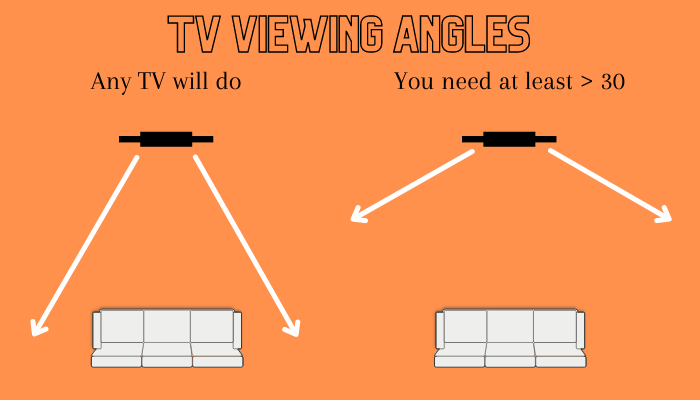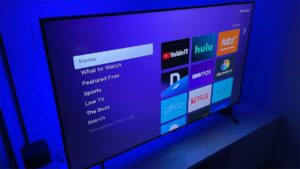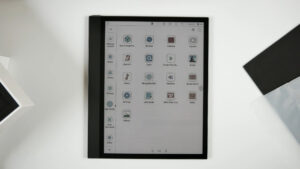Hey folks! Ever found yourself shuffling around your living room, trying to find that perfect spot where the TV looks just right?
Trust me, I’ve been there more times than I’d like to admit. The viewing angle isn’t just about where you sit; it’s the magic ingredient that can elevate your movie marathons and binge-watching sessions to a whole new level. But here’s the thing: it’s not just about comfort; it’s also a bit of science and a sprinkle of art.
So, I decided to embark on a mission for all of us and gather all the useful information I could.
From the nitty-gritty technical details to those little hacks that can tranPEsform your experience, I’ve packed this guide with everything I’ve learned. Whether you’re a cinema enthusiast aiming for that theater-like ambiance or someone just looking to enhance your cozy Netflix nights, I’ve got you covered.
So, grab your popcorn, settle in, and let’s unravel the secrets of the perfect viewing angle together!
When it matters:
You most likely don’t need a wide viewing angle if you usually watch TV alone. You should just turn the TV directly in front of you. Most probably, people with various couches or chairs will benefit from a wider viewing angle.
The difference they create is quite important for those setups that can benefit from wider watching perspectives. Compare a narrow viewing angle on the left above to a wider angle on the right above, and you can see how more leeway is available outside the TV axis to sleep and enjoy excellent picture quality.
To learn more about how to choose the best TVs for movies, check out our previous article on the subject.
How to get the best results:
Unfortunately, you can’t do anything to improve the viewing angle on a TV. If you experience sub-par image quality because your television viewing angle does not suit your seating position, you will need to shift either the television or your chairs to enhance outcomes.
If you’re interested in similar topics, be sure to read our related blog post.
Additional information
LCD Type:
The LCD screen technology they use for LCD TVs is a significant defining factor on how well a TV retains quality at an angle and is a great starting point for individuals who want a TV that appears good from the side. There are two main types used in TVs: IPS and VA; you can learn more about the different LCD types here.
IPS maintains excellent color consistency at an angle: its black levels stay almost steady at all corners, and the hues of its colors only gradually change. The downside is that the front contrast ratio is not as good as VA’s
VA loses contrast rapidly at an angle, resulting in a dull/whitish picture when you watch the TV from the side. The upside of a VA panel is the deeper blacks you’ll enjoy when sitting directly opposite the screen.
| FEATURES | LCD | PLASMA |
|---|---|---|
| Thickness | Minimum 1 inch | Minimum 1.2 inches |
| Power consumption | Requires less power to operate when compared to plasma, but more than OLED TVs | Consumes slightly more power than an LCD TV. Modern plasma displays receive high Energy Star (US) ratings. |
| Screen size | 13 – 57 inches | 42 inches and above |
| Burn-in | Not an issue | Burn-in is rare on newer plasma TVs with anti-burn-in features but was somewhat common on old plasma TVs. |
| Cost | Much cheaper | Cheaper than LED-lit TVs |
| Viewing angle | Up to 165°, Picture suffers from the side | Plasma TVs look the same from almost any angle |
| Life span | 50,000 – 100, 000 hours | Around 20, 000 – 60,000 hours |
| Backlight | Yes | No |
LCD VS Plasma Vs OLED:
LCD / LED TVs have issues with their image quality due to the complexity of the technology. The LCD screen does not generate its own light but rather filters the white light (produced by the backlight) coming from the backside of the TV. The LCD TVs have thick layers because of this sometimes they block some of the white light coming through, and more at an angle.
Specifically, VA LCDs will be most impacted by their increasing black levels, but will also suffer most from color change. Instead, IPS TVs will have a constant black level, but the higher the viewing angle will less luminance.
However, when viewed at an angle, OLED, like LED TVs, will have a color shift, so they aren’t perfect.
See also – Best Gaming 4K TVs
Measure viewing perspective
Determining the right perspective for TVs involves considering multiple factors, but the two primary aspects are image distortion and image quality variation. These two elements greatly influence the perceived quality of your TV screen when viewed from different perspectives.
Besides image distortion and image quality variation, other factors that impact the viewing experience include gamma and color shifts on the screen, reduced black levels, and image fading or discoloration. The angle at which the quality begins to degrade depends on the panel type and the size of your TV. Generally, larger devices from the same series tend to exhibit a more rapid decline in viewing quality as it increases.
Ultimately, the visual impression of a screen when viewed from an off-center angle is also influenced by personal perception and individual visual senses. Therefore, it is not possible to precisely calculate the viewing angle, or at least not with complete certainty. Any claims about the specific angle at which a certain parameter decreases in quality are also based on subjective evaluations.
What are the advantages of a small viewing?
The smaller your angle, the more content you can see, of course, and the less the overall picture quality suffers. As a result, it is important to set up your living room or gaming room in such a way that you have a central view of your TV screen from almost any position.
A mobile wall mount that can be rotated can help here. This way, you have more room for designing the interior of your home.
Frequently asked questions
Which TVs have the best viewing angle?
OLED TVs are currently known to have the best, or more accurately, widest viewing angles among available television technologies. This means that the picture quality remains relatively consistent or experiences minimal degradation, even when viewed from significantly off-center angles.
Do larger screens also automatically have a better viewing angle?
Larger screens do not automatically have better viewing angles. In fact, the viewing angle is primarily determined by the type of panel used in the TV, such as OLED, LED, or QLED. The size of the screen itself is not a direct factor in determining the right perspective.
It’s essential to maintain an appropriate distance-to-size ratio for the optimal viewing experience, as an improper ratio can negatively affect it.
Conclusion
A TV’s viewing angle is the limit of its ideal image quality. Sit at a wider one than the viewing angle at a position, and you’ll experience a worse image. For individuals sitting straight in front of their TV, this is not important, but it creates a difference for configurations with sitting off to the sides, like some living rooms.
We take videos to illustrate then also check what the panel technology type is and find the specific angle at which the picture begins to degrade.
Unfortunately, there is no way to improve the viewing angle on a TV. If you need a broad viewing, create sure you get a television that serves the need. If you already have a TV for a viewing angle that doesn’t break it, rearranging your configuration is the only choice.
Related Posts:
- Local Dimming on TVs Explained - Ultimate Guide to…
- 10 Best Ultra UHD 4K Laptop 2024 - Get the Ultimate…
- TV Motion Rate Explained - Your Guide to Smooth Viewing
- 24p Playback Explained - 2024 Guide for Film Enthusiasts
- Color Gamut Explained - 2024 Guide
- 8 Best Soundbars for TVs 2024 - Get Better Sounding…









